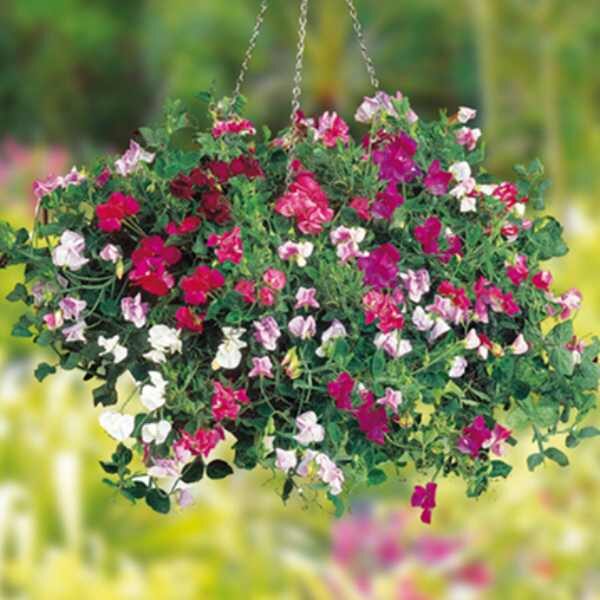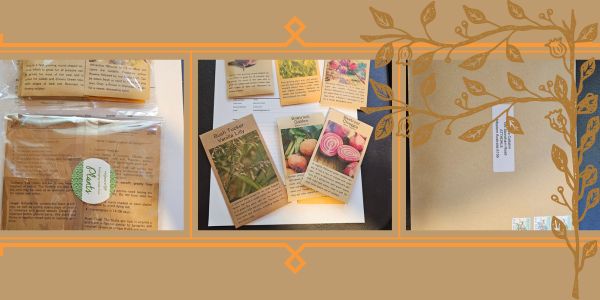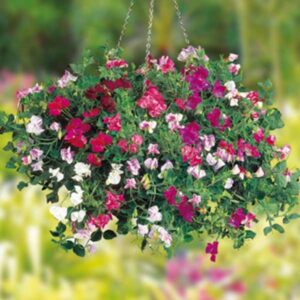Sweet Pea Knee High
$4.49
Lathyrus Odoratus
- Seed Count 10
- Self Supporting
- Annual
- 80 cm
In stock
Description
A compact old-fashioned semi-dwarf Sweet Pea Knee High is a small to medium-sized plant with more height than the dwarf types, but shorter than the traditional vine varieties.
It is a self-supporting Sweet Pea that comes in a wide range of vivid colours including lavender, pink, purple, red, salmon & white flowers.
Grows well in large containers and works well in knee-high borders, cottage gardens and large containers. Popular long-lasting cut flowers for formal arrangements or vases.
| Method: Sow direct | Soil Temp: 8°C - 24°C |
| Cool Mountain: Aug - Oct | Position: Full sun |
| Arid: Apr - Aug | Row Spacing: 8 cm apart |
| Temperate: Apr - Sep | Planting Depth: 12 mm |
| Sub Tropical: Apr - Jul | Harvest: 100 days |
| Tropical: Apr - May | Plant Height: 100 cm |
Site Selection and Soil Preparation
Sunlight:
- Sweet peas need at least 6 hours of sunlight daily. In hotter regions, provide afternoon shade to protect them from scorching.
Soil:
- They prefer well-draining, fertile soil with a slightly alkaline pH (6.5–7.5). Enrich the soil with compost or well-rotted manure before planting.
Drainage:
- Ensure the soil is not waterlogged, as sweet peas dislike wet feet.
How to Plant Sweet Peas
Seeds:
- Soak seeds in water for 24 hours before planting to improve germination.
- Sow seeds directly into the garden or start them in seed trays.
- Plant seeds 12 mm deep, spacing them 8 cm apart.
- If using seed trays, transplant seedlings when they are 5–7 cm tall.
Support:
Bush varieties:
- Small 1 m canes can be used to provide support, or they can be allowed to tumble for a softer effect.
Climbing varieties:
- Trellising needs to be set up for support
Watering and Feeding
Watering:
- Keep the soil consistently moist but not waterlogged.
- Water deeply once or twice a week, depending on rainfall and temperature.
Feeding:
- Sweet peas are heavy feeders.
- Apply a balanced liquid fertiliser every 2–3 weeks during the growing season.
- Alternatively, use a slow-release fertiliser at planting time.
Mulching and Weeding
- Apply a layer of mulch (e.g., straw or sugar cane mulch) around the plants to retain moisture and suppress weeds.
- Keep the area weed free to reduce competition for nutrients.
Pest and Disease Management
Sweet peas are relatively pest resistant but can be affected by:
Aphids:
- Spray with a mild soap solution or use neem oil.
Powdery Mildew:
- Ensure good air circulation and avoid overhead watering. Treat with a fungicide if necessary.
Snails and Slugs:
- Use organic bait or traps to protect young plants.
Pruning and Deadheading
Pinching:
- Pinch out the growing tip when seedlings are 10–15 cm tall to encourage bushier growth.
Deadheading:
- Remove spent flowers regularly to promote continuous blooming.
Cutting Flowers:
- Harvest flowers frequently for bouquets to encourage more blooms.
Saving Seeds
- Allow some pods to mature and dry on the plant.
- Harvest the pods when they turn brown and brittle.
- Remove the seeds and store them in a cool, dry place for planting next season.
Common Problems and Solutions
Poor Germination:
- Ensure seeds are soaked before planting and soil is kept moist.
Yellowing Leaves:
- Often a sign of overwatering or nutrient deficiency.
- Check drainage and fertilise if needed.
Lack of Flowers:
- This can be due to insufficient sunlight, poor soil fertility, or excessive nitrogen.
- Address these issues to encourage blooming.
Sweet Peas in Pots
- Sweet peas can be grown in pots if space is limited:
- Choose a deep pot (at least 30 cm deep) with good drainage.
- Use a high-quality potting mix enriched with compost.
- Provide a trellis or support for climbing.
- Water and feed regularly, as potted plants dry out faster.
- Companion Planting
Sweet peas grow well with:
Roses:
- Their climbing habit complements rose bushes.
Lettuce and Spinach:
- Sweet peas provide shade for these cool season crops.
Avoid planting with:
- Onions or garlic, as they can inhibit growth.
Postage Charge
Orders under $30 attract a $4.50 shipping charge. Orders $30 and above have free shipping.
Order Times
Seed orders are normally dispatched within three business days. You will receive an email when seeds are mailed out.
Postage Days
Seeds are mailed out Monday to Friday at 1pm. Except for the Friday of long weekends.
Postage Times
WA 2-3 Days: SA,NT 3-5 Days: NSW, ACT, QLD, VIC: 5-7 Days
Carrier
We use Australia Post Letter Postage for the majority of orders
Not only are our seeds packed in recycled paper envelopes, we keep the theme going when we post out website orders. To protect your seeds from moisture and the letter box munchers (snails), we use a very special plastic free material made from plants. They are then put into recycled mailing envelopes. Green all the way 💚🌿












1 review for Sweet Pea Knee High